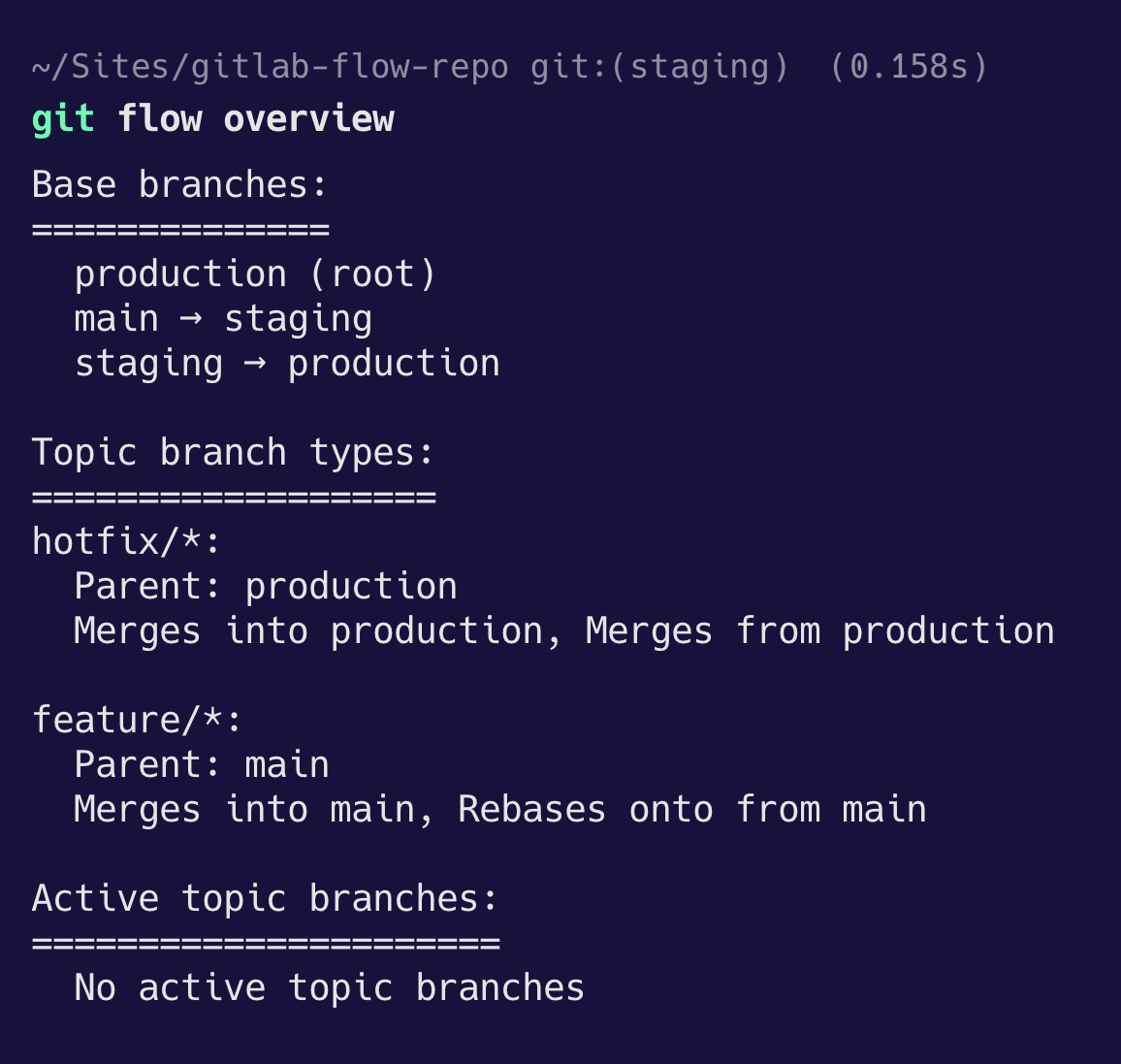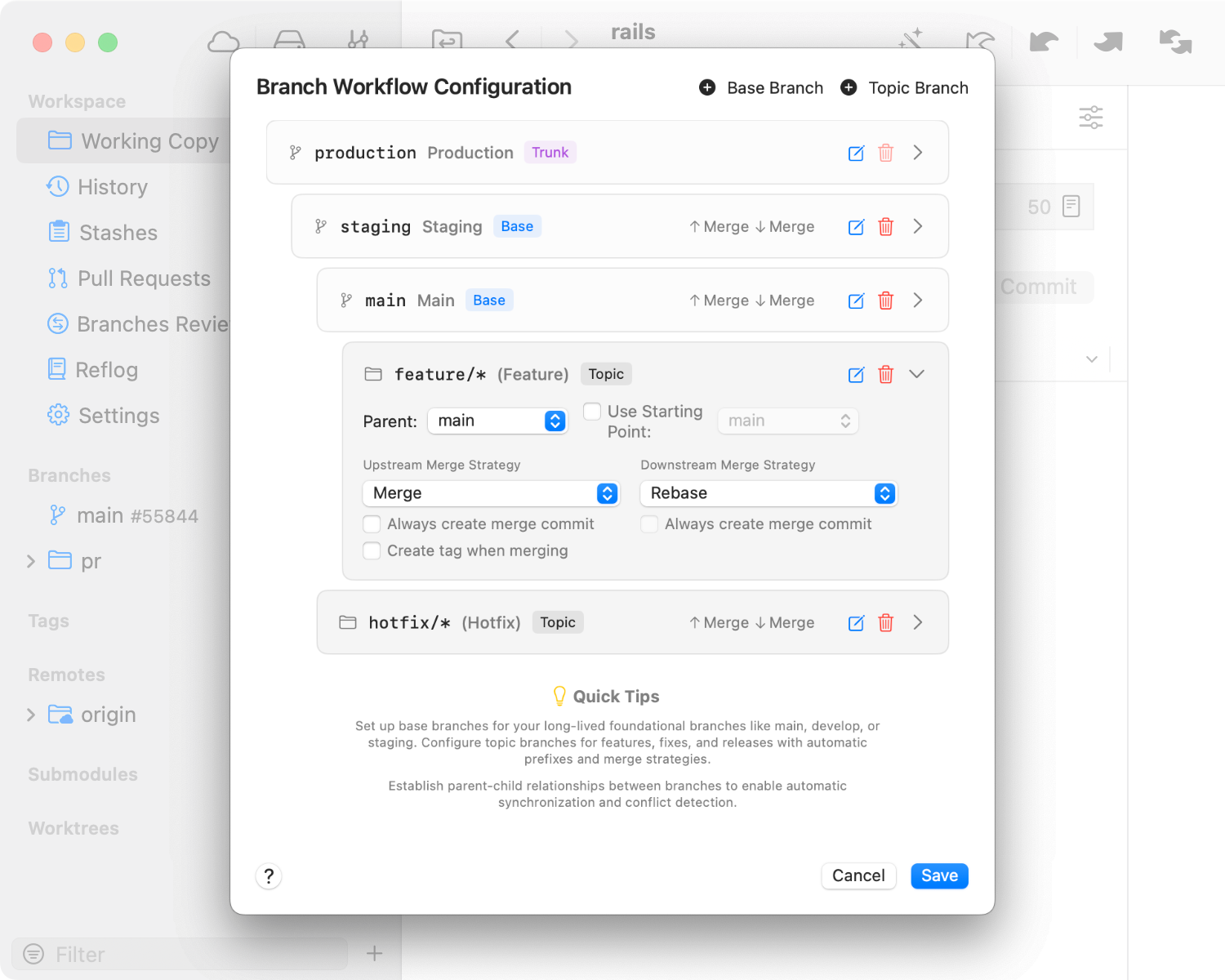How GitLab Flow Works

Base Branches
production(Root Branch): This is the ultimate source of truth; the only branch that deploys to the production environment.main: The primary integration branch where all new features are initially merged. It acts as the source for the staging environment.staging: This branch acts as the final gate, deploying to a non-production environment that closely mimics the live setup. It is always updated frommainbefore being promoted toproduction.
Topic Branches
feature/*: Used for all new functionality.hotfix/*: Reserved for urgent, production-breaking fixes.
